Using Minor Triad Arpeggios - Plus One for Creating Melodic Solos. With chord tones, the notes of a chord playing a predominant role in writing and in and improvised melodies. The triad plus one additional note is a great melodic device for creating melodies - either written or improvised.
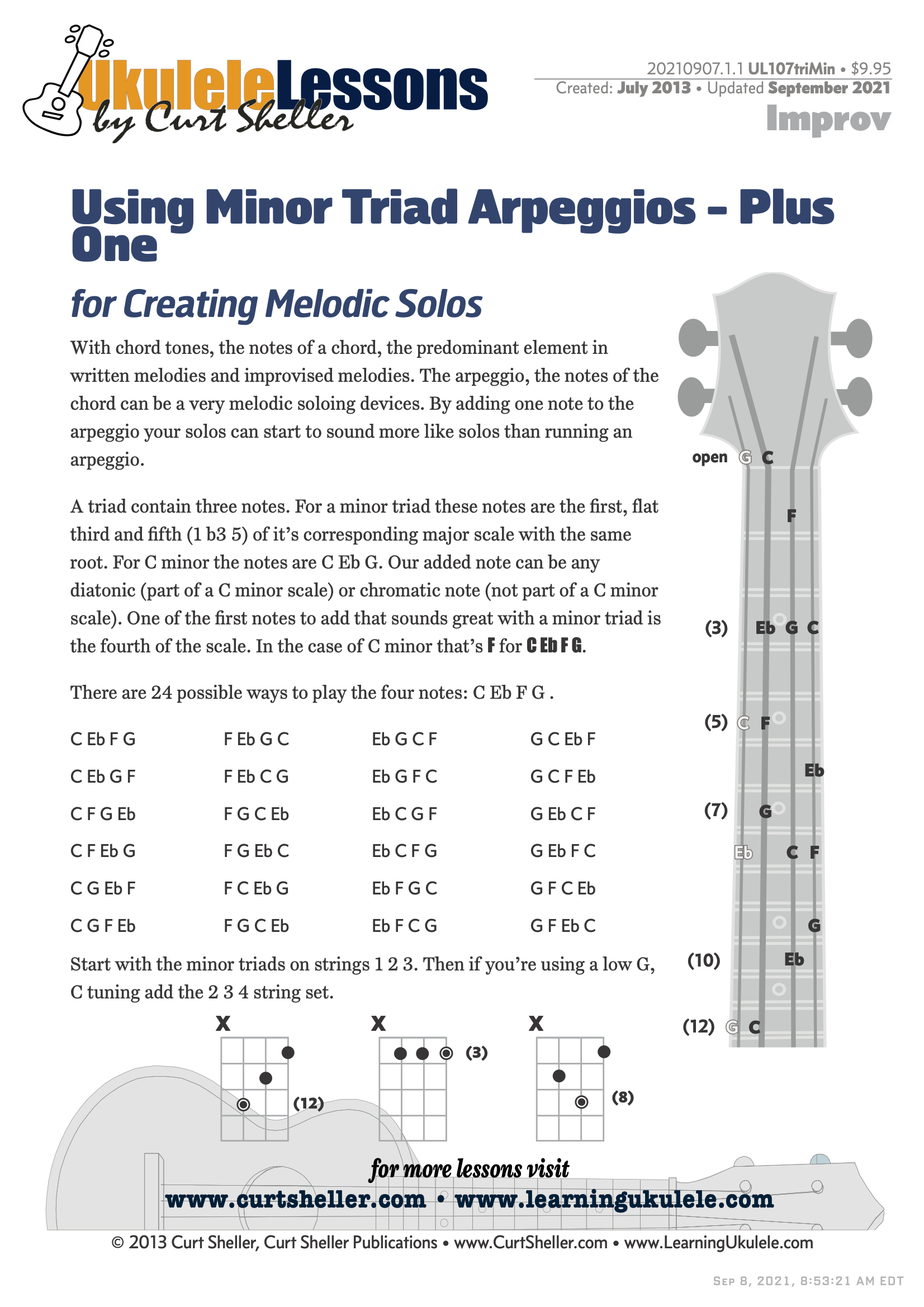
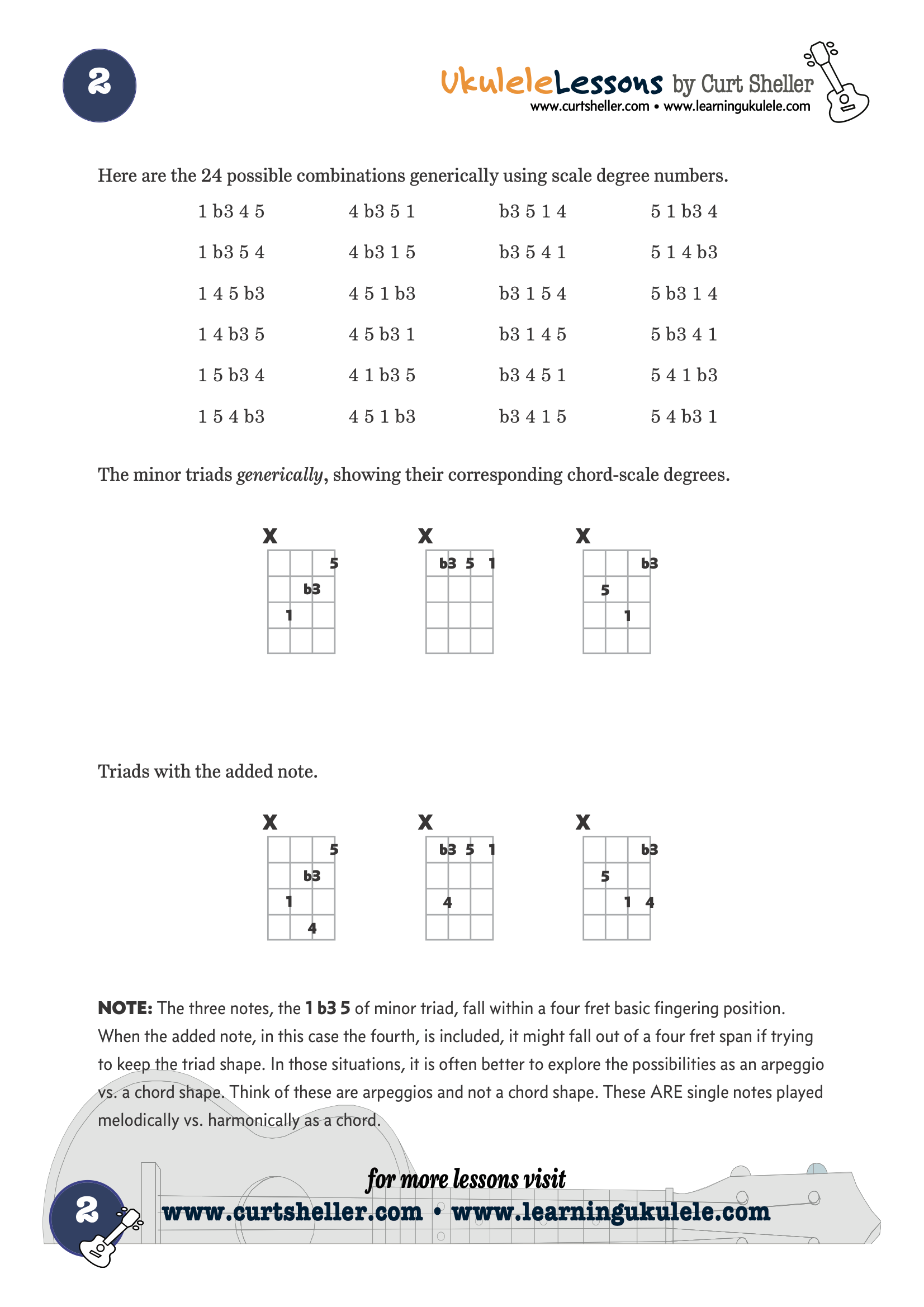
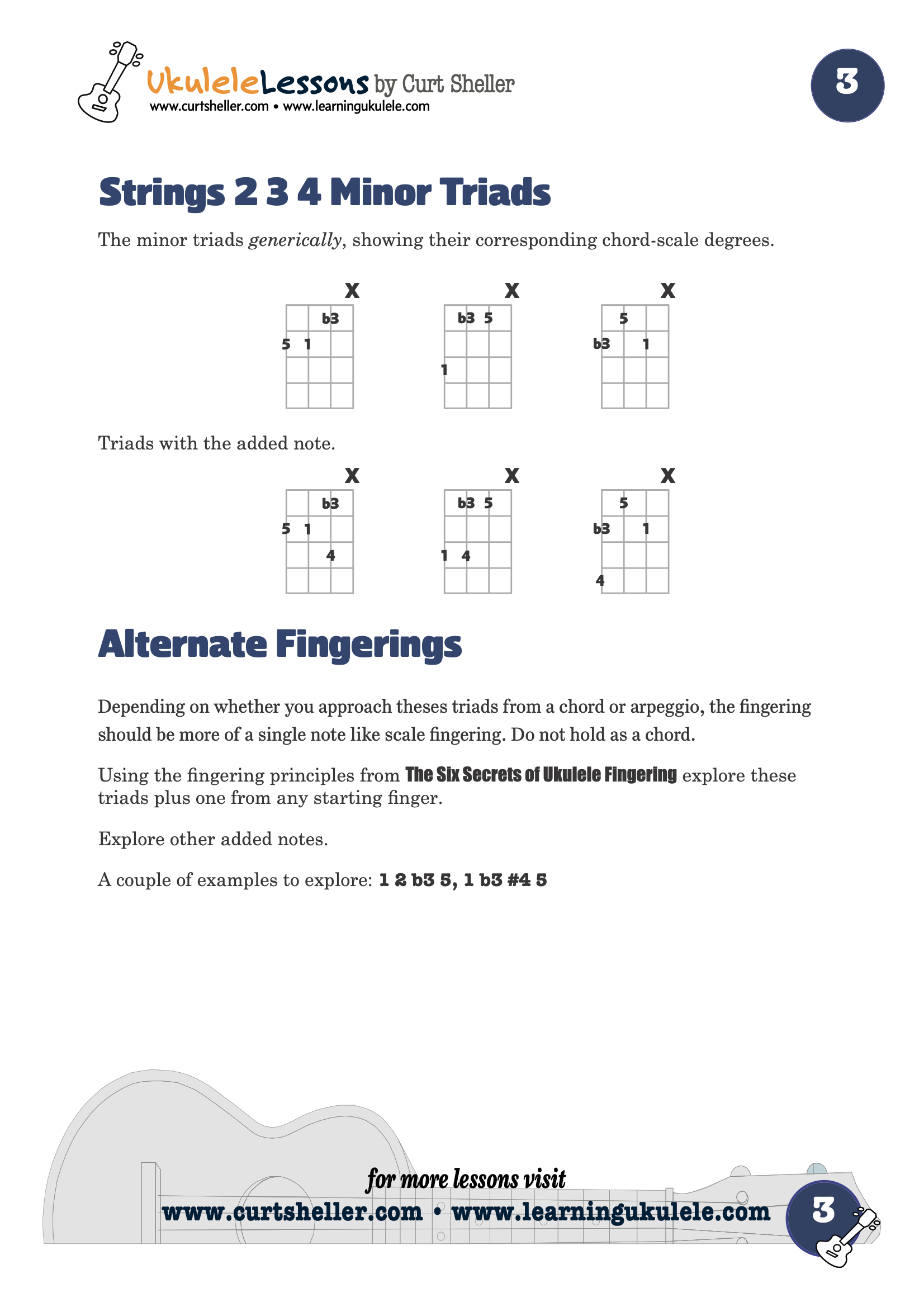
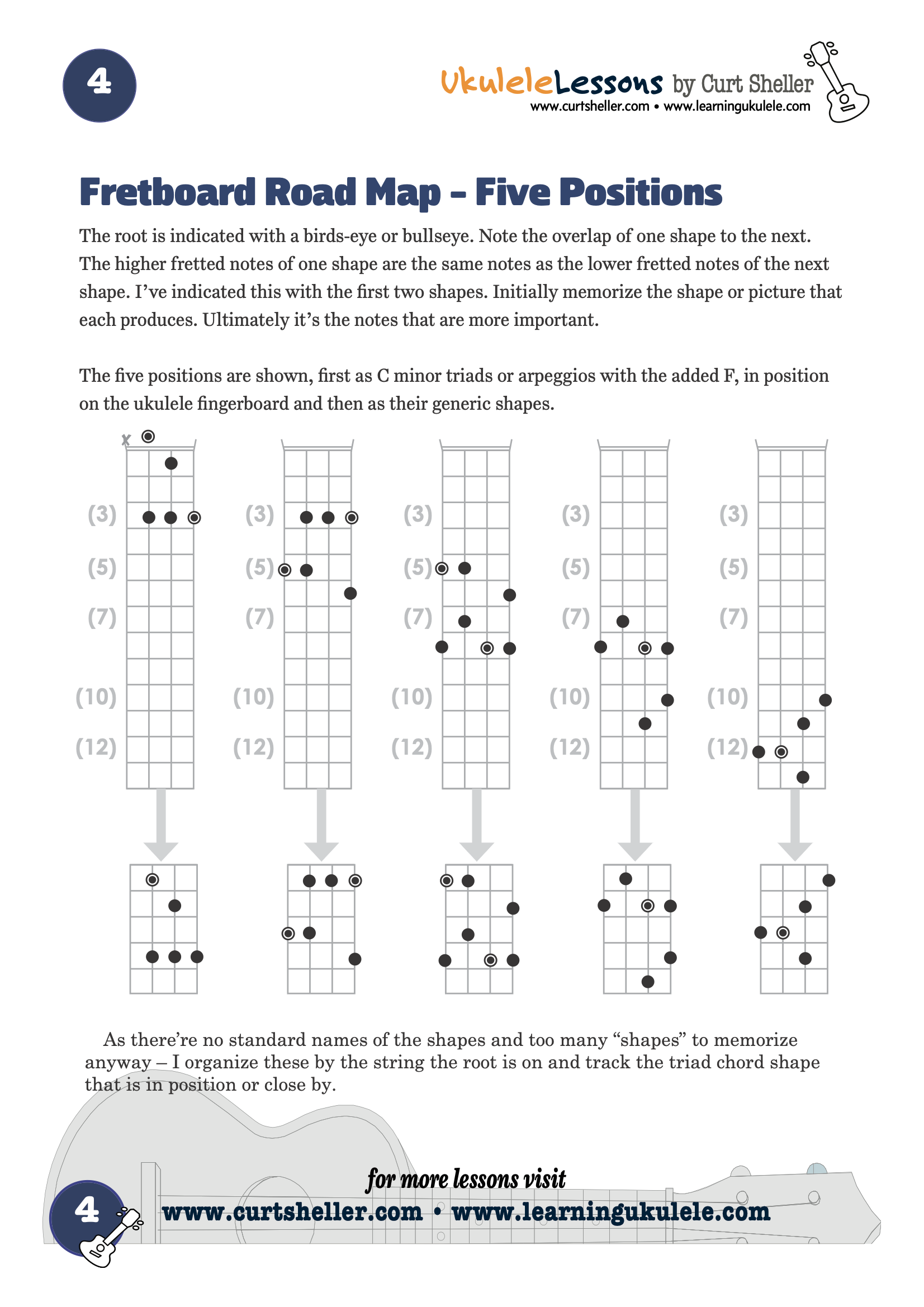




Using Minor Triad Arpeggios - Plus One for Creating Melodic Solos.
With chord tones, the notes of a chord playing a predominant role in writing melodies and in improvised melodies. The triad plus one additional note is a great melodic device for creating melodies - either written or improvised.
A triad contains three notes.
For a minor triad these notes are the first, flat third and fifth (1 b3 5) of it’s corresponding major scale with the same root.
For C minor the notes are C Eb G. Our added note can be any diatonic ( part of a C minor scale ) or chromatic note ( not part of a C minor scale ).
One of the first notes to add that sounds great with a minor triad is a fourth of the scale. In the case of C minor that’s F for C Eb F G.
Available for Premium Site Access Plans Only
With chord tones, the notes of a chord playing a predominant role in writing melodies and in improvised melodies. The triad plus one additional note is a great melodic device for creating melodies - either written or improvised.
A triad contains three notes. A triad is the foundation of our western harmony, the chords, and chord progressions. A triad is at the heart of our more contemporary 4-part, 5-part, and beyond chords. A triad IS the chord tones / arpeggio of a chord and main component of improvisation – outlining a chord.
For a _minor_ triad these notes are the first, flat third and fifth (1 ♭3 5) of it’s corresponding major scale with the same root.
For C minor the notes are C E♭ G. Our added note can be any diatonic note ( part of a C minor scale ) or chromatic note ( not part of a C minor scale ).
One of the first notes to add that sounds great with a minor triad is a fourth of the scale. In the case of C minor that’s F for C E♭ F G.
Using Minor Triad Arpeggios - Plus One for Creating Melodic Solos.
With chord tones, the notes of a chord playing a predominant role in writing melodies and in improvised melodies. The triad plus one additional note is a great melodic device for creating melodies - either written or improvised.
A triad contains three notes.
For a minor triad these notes are the first, flat third and fifth (1 b3 5) of it’s corresponding major scale with the same root.
For C minor the notes are C Eb G. Our added note can be any diatonic ( part of a C minor scale ) or chromatic note ( not part of a C minor scale ).
One of the first notes to add that sounds great with a minor triad is a fourth of the scale. In the case of C minor that’s F for C Eb F G.
Available for Premium Site Access Plans Only
With chord tones, the notes of a chord playing a predominant role in writing melodies and in improvised melodies. The triad plus one additional note is a great melodic device for creating melodies - either written or improvised.
A triad contains three notes. A triad is the foundation of our western harmony, the chords, and chord progressions. A triad is at the heart of our more contemporary 4-part, 5-part, and beyond chords. A triad IS the chord tones / arpeggio of a chord and main component of improvisation – outlining a chord.
For a _minor_ triad these notes are the first, flat third and fifth (1 ♭3 5) of it’s corresponding major scale with the same root.
For C minor the notes are C E♭ G. Our added note can be any diatonic note ( part of a C minor scale ) or chromatic note ( not part of a C minor scale ).
One of the first notes to add that sounds great with a minor triad is a fourth of the scale. In the case of C minor that’s F for C E♭ F G.
Improvising Using Minor Triads Plus One Note
C Minor Plus One
There are 24 possible ways to play the four notes: C E♭ F G .
C F E♭ G F E♭ G C E♭ G C F G C E♭ F C F G E♭ F E♭ C G E♭ G F C G C F E♭ C E♭ G F F G C E♭ E♭ C G F G E♭ C F C E♭ F G F G E♭ C E♭ C F G G E♭ F C C G F E♭ F C E♭ G E♭ F G C G F C E♭ C G E♭ F F G C E♭ E♭ F C G G F E♭ C
1 4 ♭3 5
1 4 ♭3 5 4 ♭3 5 1 ♭3 5 1 4 5 1 ♭3 4 1 4 5 ♭3 4 ♭3 1 5 ♭3 5 4 1 5 1 4 ♭3 1 ♭3 5 4 4 5 1 ♭3 ♭3 1 5 4 5 ♭3 1 4 1 ♭3 4 5 4 5 ♭3 1 ♭3 1 4 5 5 ♭3 4 1 1 5 4 ♭3 4 1 ♭3 5 ♭3 4 5 1 5 4 1 ♭3 1 5 ♭3 4 4 5 1 ♭3 ♭3 4 1 5 5 4 ♭3 1
Explore using D the 2nd vs. the F, the 4th. Any added +1 is possible.

Every Finger, Every String — Explore these starting on any finger any string.
Using the fingering principles from my book The Six Secrets of Ukulele Fingering allows you to explore scales, arpeggios, intervals and sequences starting on every finger-every string, creating multiple pathways through any single note passage.
Related Lessons, Videos, Lesson Series, Songs, Books & Reference Charts, Resources & Assets, Workshops are below.
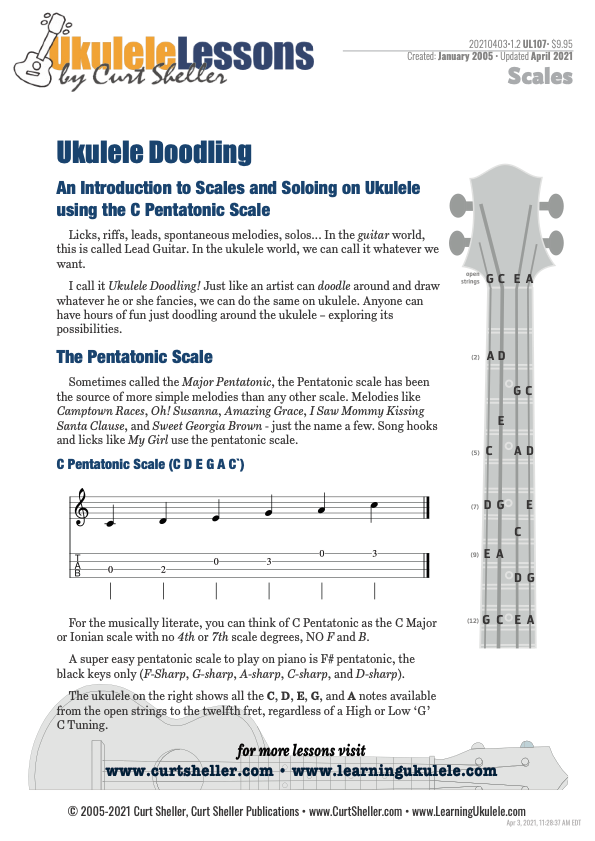
An "Introduction to Scales and Soloing on Ukulele" using the C Pentatonic Scale. Taking what you might already know and using it in different ways. Exploring the entire ukulele fingerboard have hours of fun just doodling around and exploring the ukulele's possibilities.
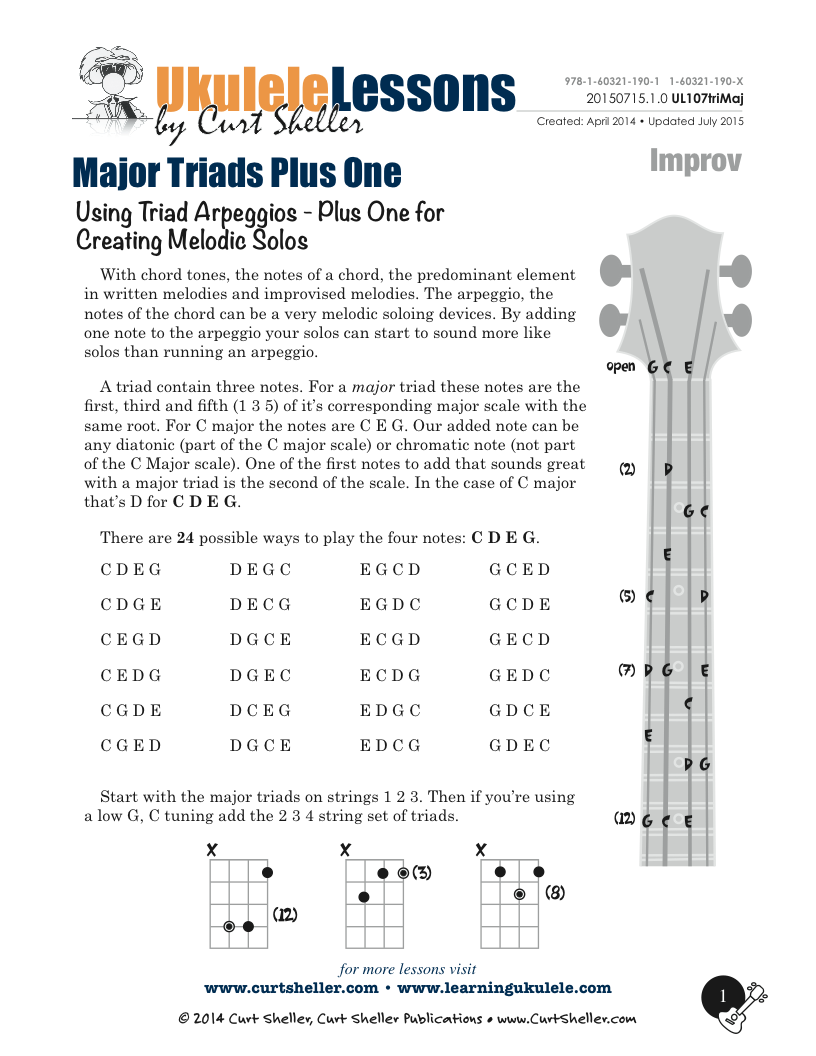
Using Major Triad Arpeggios - Plus One for Creating Melodic Solos. With chord tones, the notes of a chord playing a predominant role in writing melodies and in improvised melodies. The triad plus one additional note is a great melodic device for creating melodies - either written or improvised.
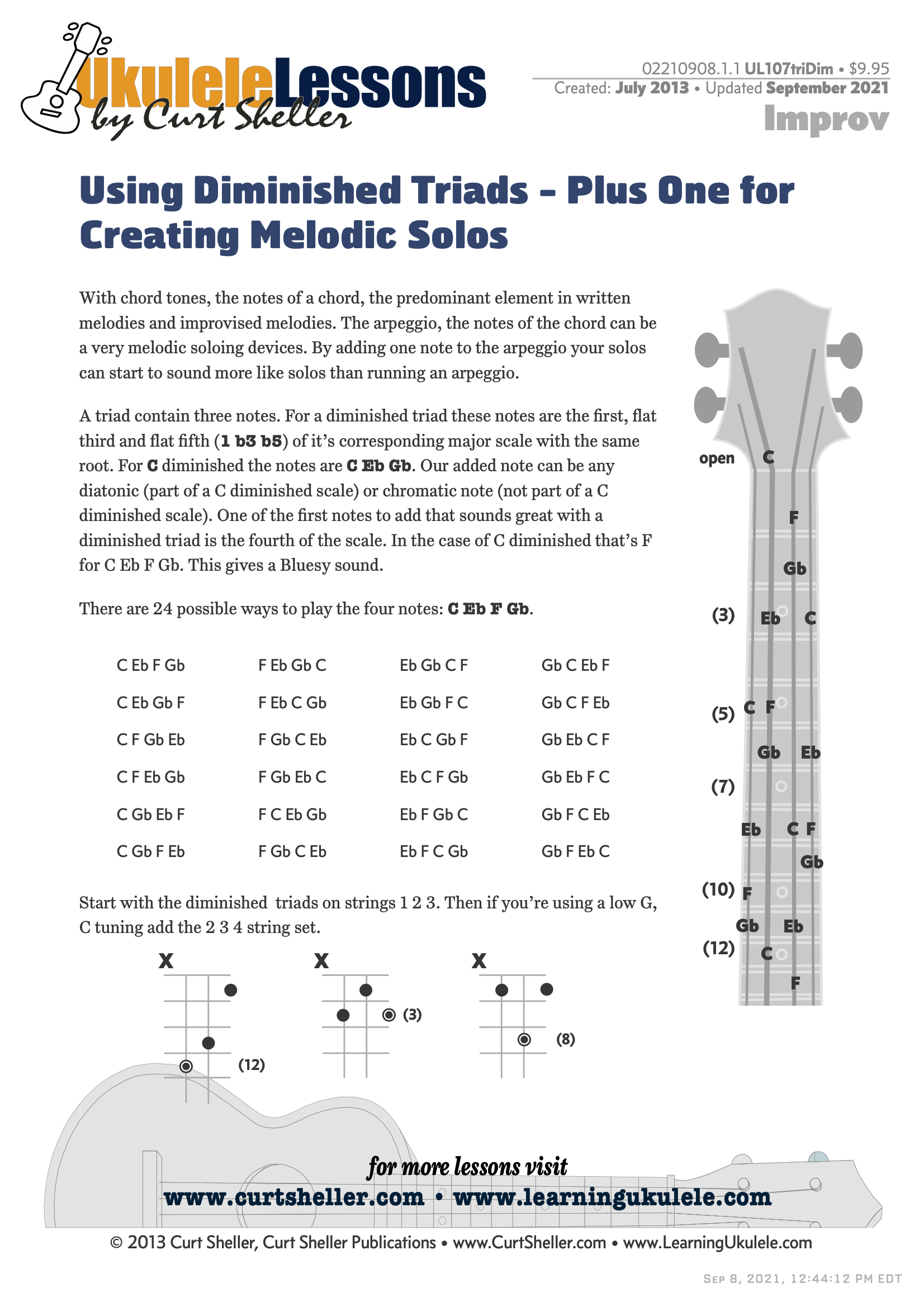
Using Diminished Triad Arpeggios - Plus One for Creating Melodic Solos. With chord tones, the notes of a chord playing a predominant role in writing melodies and in improvised melodies. The triad plus one additional note is a great melodic device for creating melodies - either written or improvised.

Using Augmented Triad Arpeggios - Plus One for Creating Melodic Solos. With chord tones, the notes of a chord playing a predominant role in writing melodies and in improvised melodies. The triad plus one additional note is a great melodic device for creating melodies - either written or improvised.
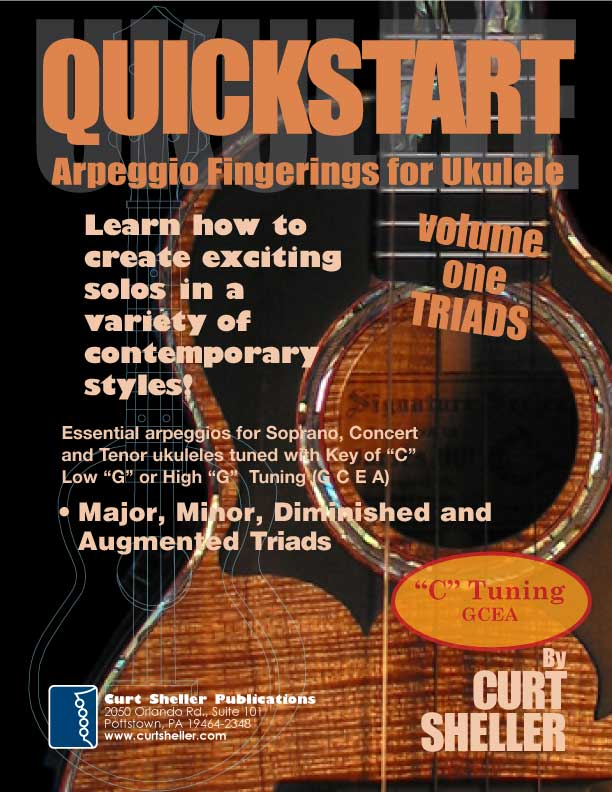
QuickStart Scale Arpeggio Fingerings for Ukulele - Triads is a concise, well organized book ideal for any ukulele player beginning to explore the ukulele's full potential as a musical instrument. Arpeggio Fingerings for Ukulele - Triads keeps a sharp focus on essential arpeggios and their fingerings. All material is covered in every key.
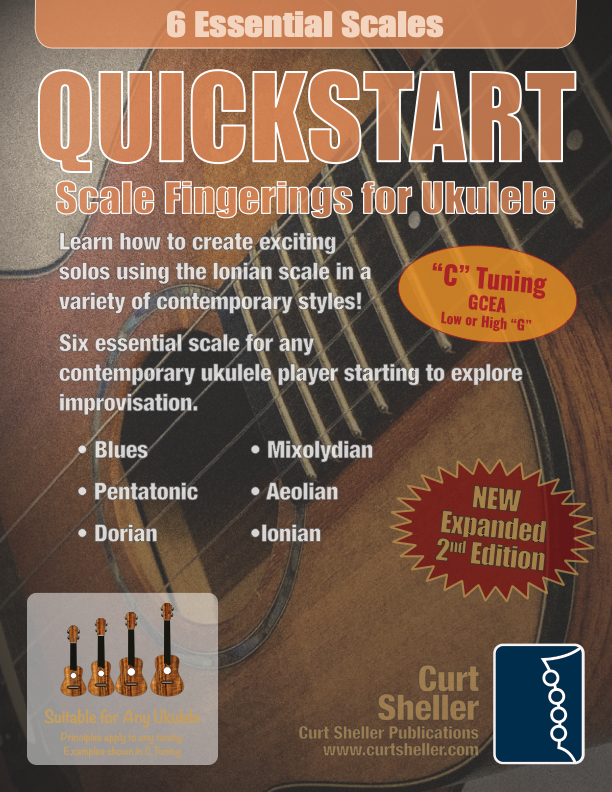
Learn to create exciting solos in a variety of contemporary styles! Scales are used to improvise, create melodies and riffs. With broad knowledge of the essential scales that are used in contemporary music and a mastery of the ukulele's fingerboard and fingering principles, you're well on your way.

Learn the six fingering principles to navigating the ukulele fingerboard. Fingering is one of the most universal topics. Whether your style is Rock, Blues, Country, Jazz or Classical, these principles will improve your technique, your solos, even your sight reading. Think of fingering as a series of pathways. When you learn to connect these pathways, there are benefits not only to technique but also to creativity.
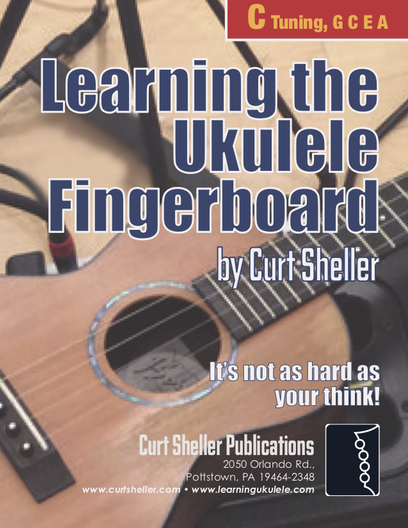

return in your investment)—it is this— learning the
f*ckingnotes of your OWN instrument. Sorry for the tough talks—but it is sooooo true!
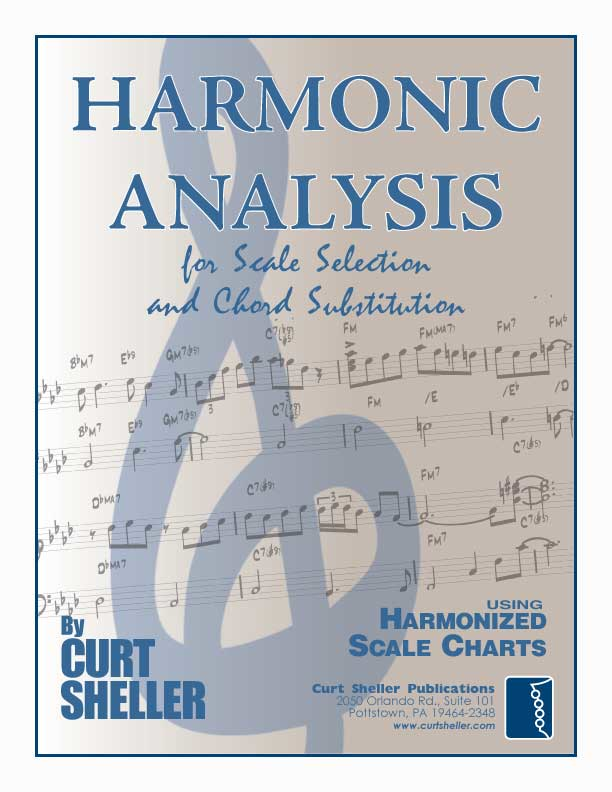
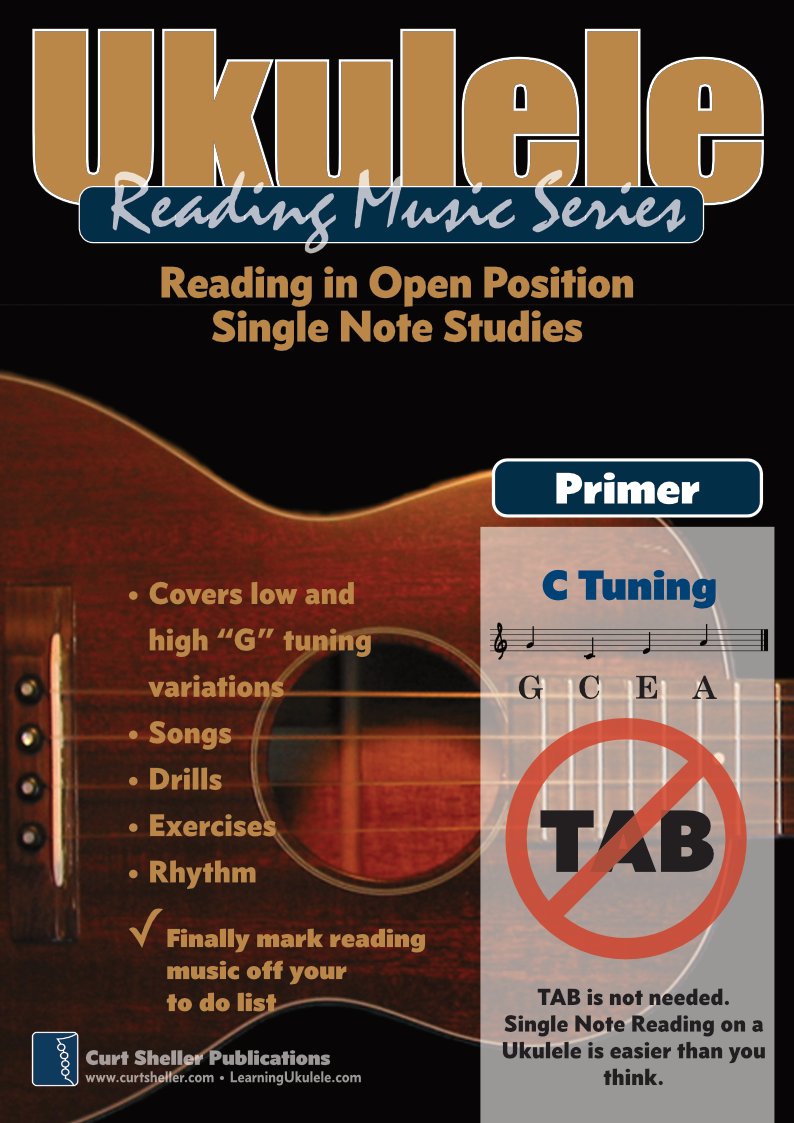
Learn to read single note melodies in the first/open position is a lot easier than you might think. Book: Ukulele – Reading Music Series – Primer
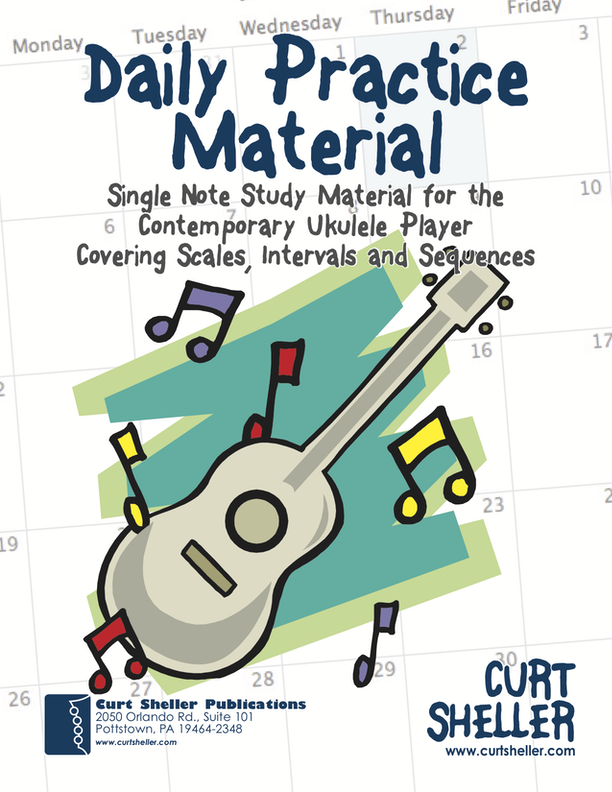
An organized collection of daily practice and reference material for the contemporary ukulele player for developing the vocabulary and knowledge necessary for single note playing. Book: Daily Practice Material for the Contemporary Ukulele
Checkout the Books & Reference Charts for additional Handy, Dandy Reference Charts.
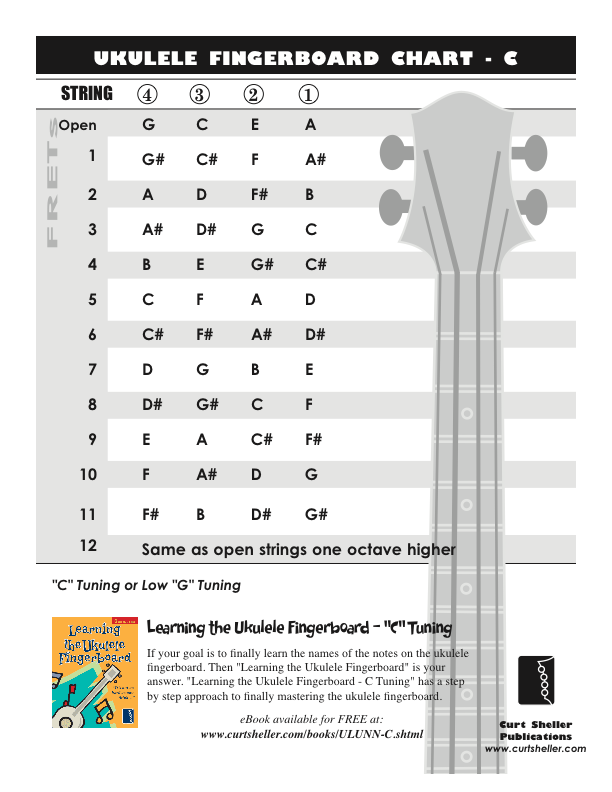
Ukulele Fingerboard Chart for C Tuning, Low or High G – G C E A
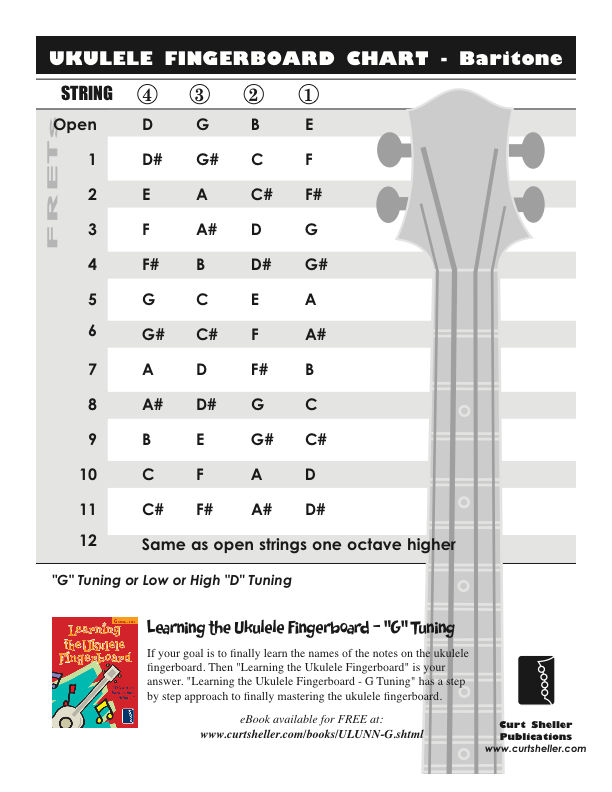
Ukulele Fingerboard Chart for G Tuning, Low or High A – D G B E
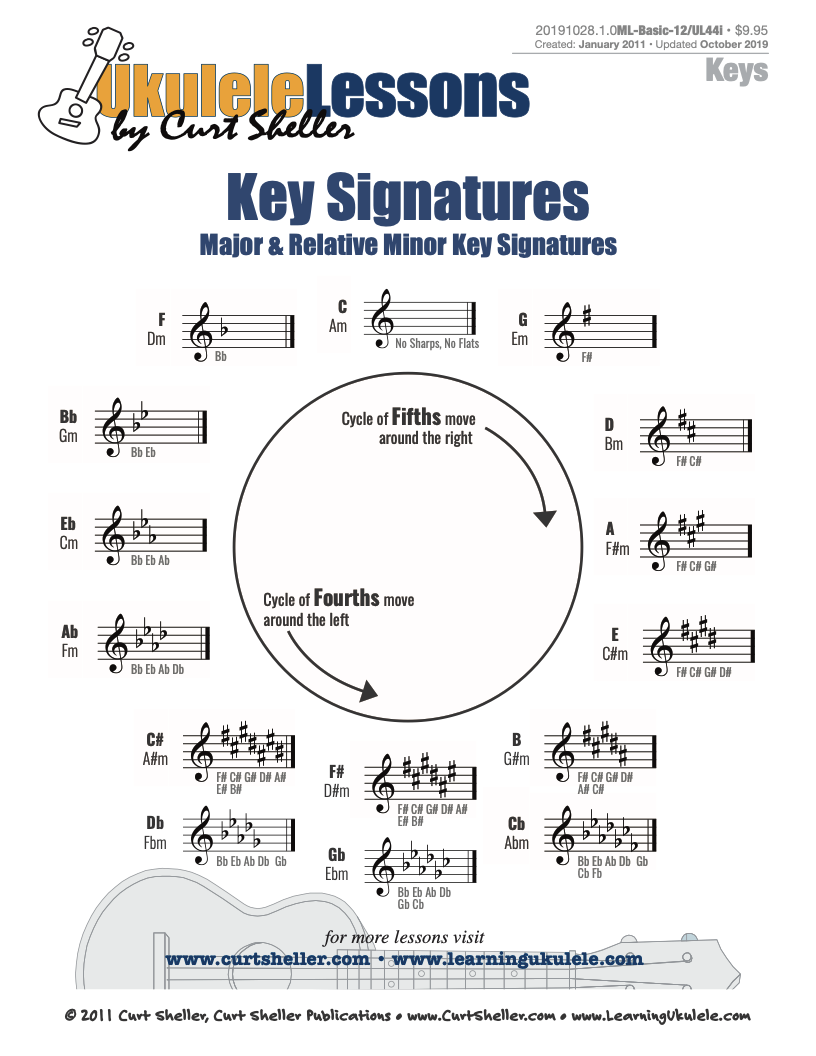
A handy reference chart of all 15 major and relative minor key signatures. US Letter 8.5 x 11 sized (ANSI-A) , A4

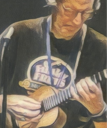
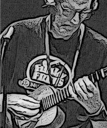
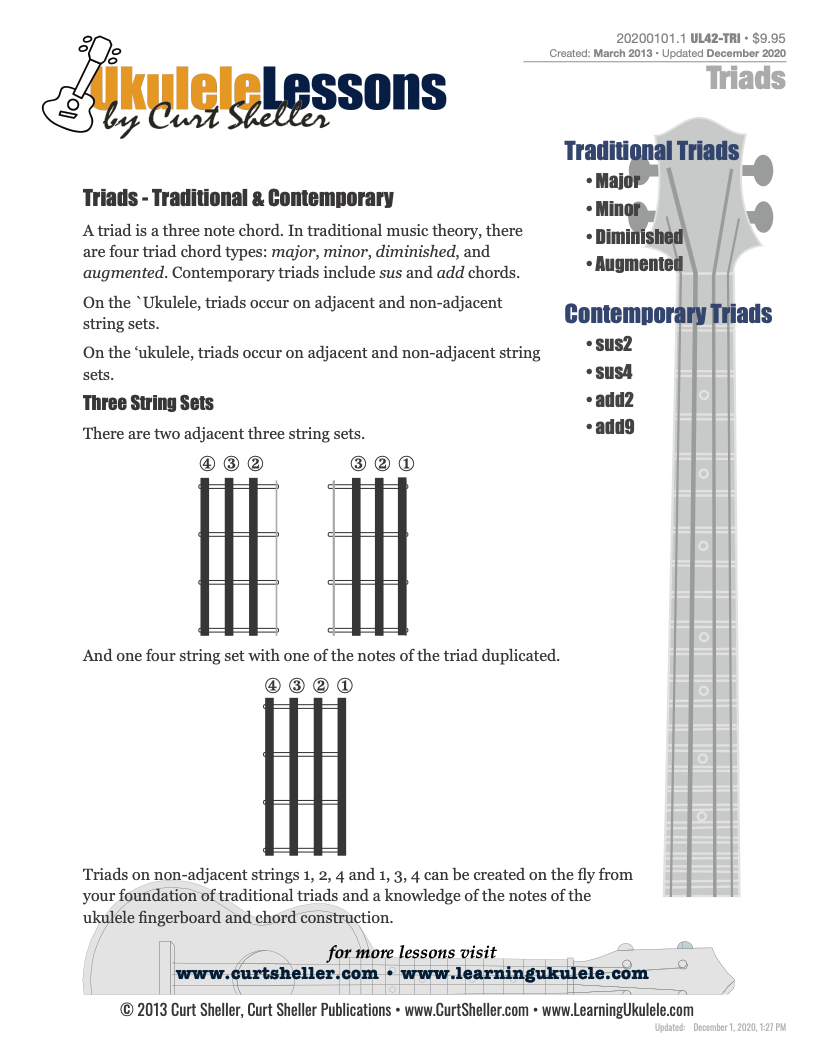
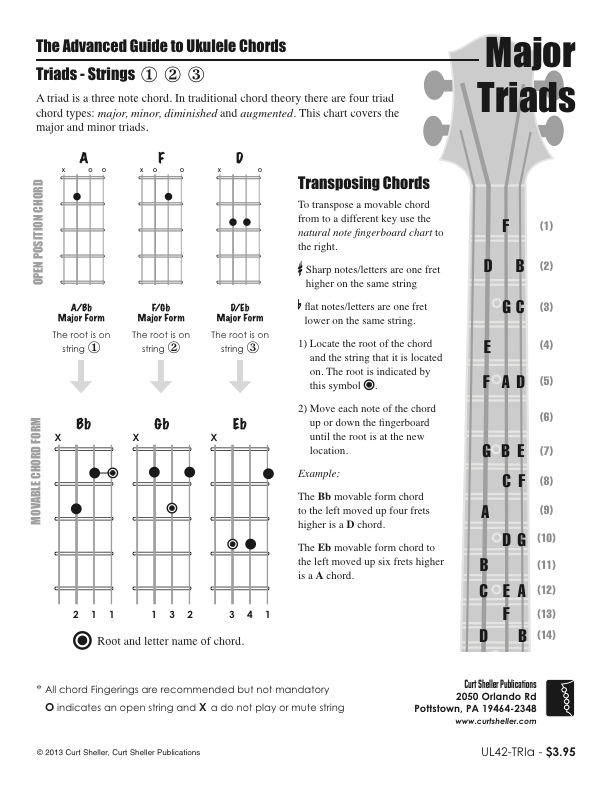
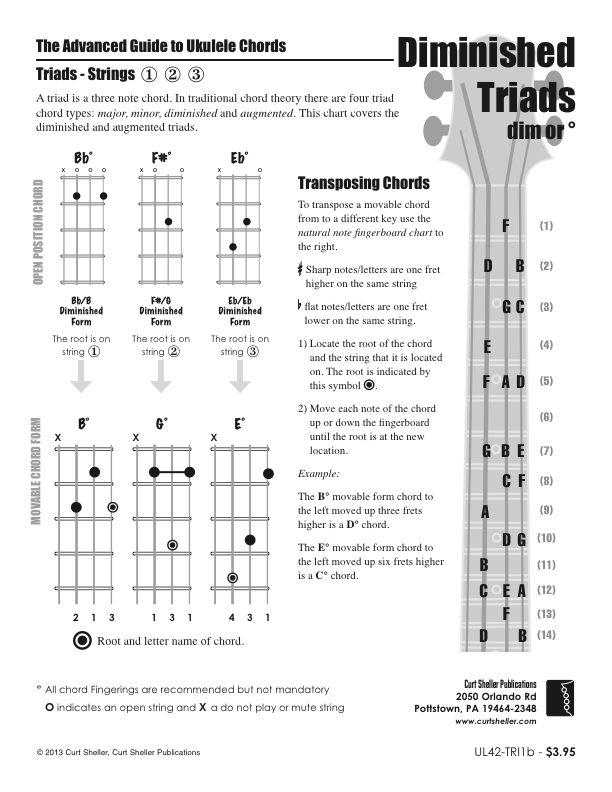
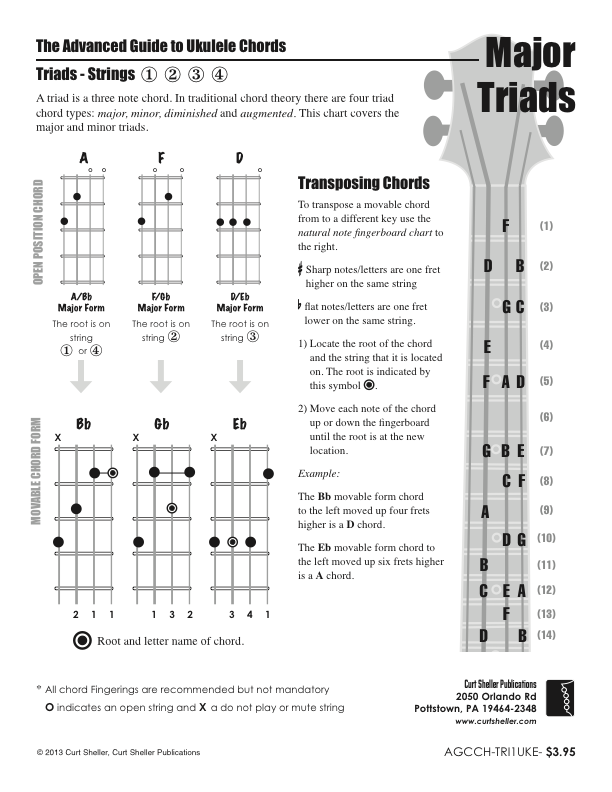
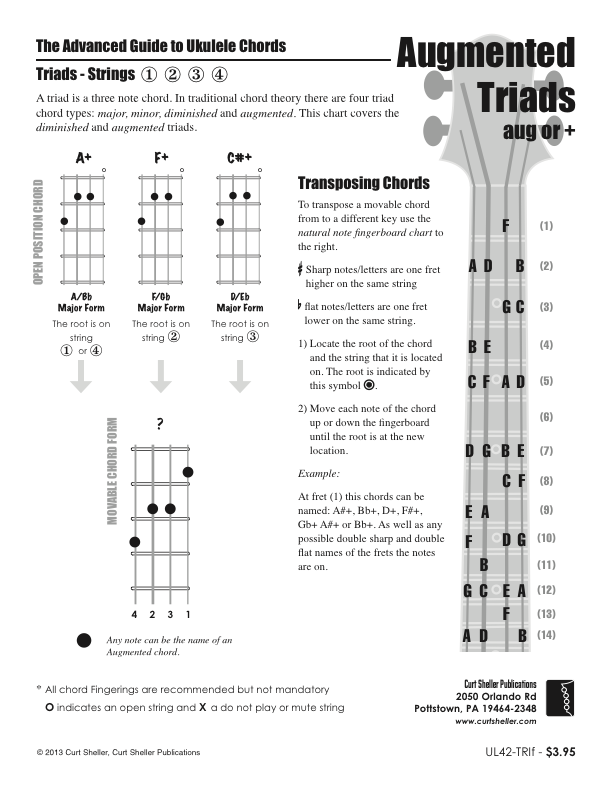
.jpg)